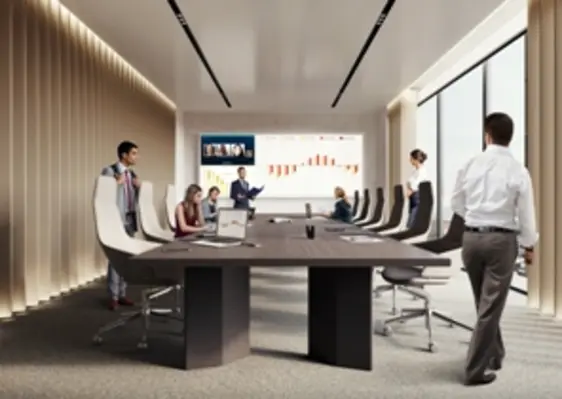Technology company Barco has discussed the trends in the video wall market space
As more organisations begin welcoming employees back to the office in some capacity, large-format video walls are now taking a more prominent and colourful position in reception areas, meeting rooms and show rooms. Across a host of applications, business leaders see video walls as an opportunity to introduce creativity and a "wow" factor that invites employees and guests to the office and serves as a differentiator.
The close of 2021 saw more business and IT leaders evaluating potential video wall upgrades and installations, setting the tone for another busy year across the market. Here are just three of the ways we see a bright future ahead for the video wall space.
The rise of LED
The past year has cemented LED as the gold standard of the video wall space. Businesses who have the budget and intent are more willing to invest in displays that produce superior image quality, colour vibrancy and accurate detail. In turn, large video walls that previously were only seen in common, public spaces are becoming – and will continue to become – a standard fixture in corporate environments.
Even as LED displays extend their popularity, the market and demand for LCD video walls remains solid. While not all businesses are ready to or can afford to make substantial technology investments following a turbulent year, those seeking impactful change at a more affordable price are finding a match in LCD displays that support collaboration while delivering meaningful value.
On the other hand, while it still maintains a place in the corporate space, rear projection continues to see a reduced demand. Projection video walls have a niche in applications that require precise and continuous functionality and are less concerned with stunning, high-quality images, such as control rooms and security centres. However, among public-facing environments, we're likely to see the tide continue to shift more to LED and LCD video walls where visual appeal plays a greater role.
The push for techoration
In 2021, the use of video wall technology to create memorable and immersive experiences in public spaces literally became an art form.
While a years-old concept, techoration – or the use of video walls and other display technologies as canvases for engaging, informative and entertaining content – became one of the most fun and competitive innovations we saw last year. With video walls serving as a blank canvas, businesses redefined and extended their brands to public spaces through colourful and brilliant visuals, videos and interactive experiences.
The simultaneous emergence of techoration and more powerful video walls will only foster more creativity in 2022 and beyond. Businesses now understand the challenge of creating memorable first and last impressions and regaining eyes that went elsewhere during the pandemic, and the race to techorate will drive both higher demand for video walls and first-of-their-kind applications.
The commitment to a more sustainable future
In 2022, sustainability will continue to evolve from a buzz word to an essential function – even within the visual display space. Businesses are under greater pressure from stakeholders and customers to reduce their environmental impact, including a push for technologies that require less power and fewer resources to operate and maintain.
In turn, video wall manufacturers now are re-evaluating how to develop displays that deliver powerful visual accuracy and impact in a more responsible fashion. For example, we're beginning to see displays that automatically go into "eco-mode" when not in use to conserve power.
With the potential to enliven well-travelled spaces and offer new avenues for engagement and visibility that guides decision-making, the role and presence of video walls in business spaces is only likely to grow in the new era.
There’s no doubt that technology and innovation will continue to help us survive and thrive, and I'm excited to see what lies ahead in the New Year and beyond.










